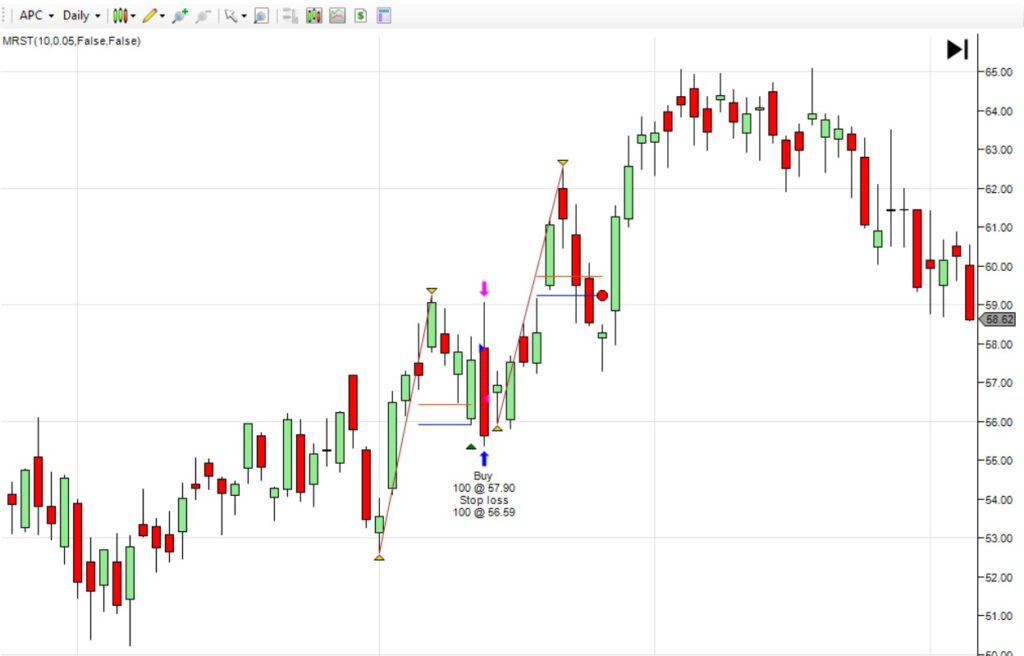Table of Contents
Swing trading is a common investment method in which equities are bought and held for a short period of time, typically a few days to a couple of weeks, in order to profit from market movements. One of the most important aspects of successful swing trading is the utilization of mean reversion, a statistical concept that suggests that stock prices tend to revert to their average over time.
In this post, we’ll look at the fundamentals of mean reversion and how they might be applied to swing trading to help you get better results.
What is Mean Reversion?
Mean reversion is a statistical concept that states that stock prices tend to return to their mean over time. This means that if a stock price deviates too much from its average, it is likely to return to that average in the future.
This concept is founded on the assumption that a variety of factors influence stock prices, such as economic conditions, corporate performance, and investor sentiment. These variables can cause stock values to fluctuate in the short term, but over time, prices tend to return to their average.
How to Apply Mean Reversion to Swing Trading
Mean reversion can be used in swing trading in a number of ways. One of the most common approaches is to use technical indicators, such as moving averages, to determine when a stock’s price has drifted too far from its average and is likely to reverse.

Another way is to utilize fundamental analysis to discover whether a stock’s present price is comparable to its intrinsic value. If a stock is trading much higher than its intrinsic value, it could be a strong candidate for mean reversion.
Also Read: Swing Trading the NASDAQ100 ETF: QQQ
Key Considerations for Using Mean Reversion in Swing Trading
While mean reversion can be an effective swing trading tool, there are a few things to bear in mind.
First, it is critical to recognize that mean reversion is a statistical concept, not a certainty. There is no certainty that a stock’s price will return to its average, and prices can diverge from that average for extended periods of time.
Second, assess the quality of the data used to generate the average price. Poor quality data might result in inaccurate computations and poor investment decisions.
Finally, when using mean reversion to swing trading, take into account the general market conditions. In times of market volatility, mean reversion may be less successful than in more stable market conditions.
Conclusion
In conclusion, mean reversion is a powerful concept that may be used to improve your swing trading performance. Understanding the fundamentals of mean reversion and applying it to technical and fundamental research allows you to make informed investing decisions and potentially profit from stock market price swings.
Frequently Asked Questions
1. What is Mean Reversion, and how does it relate to swing trading?
- Mean reversion is a statistical concept that states that stock prices tend to return to their historical average over time. In swing trading, it is used to identify when a stock’s price deviates significantly from its average, indicating a potential reversion to the mean.
2. Can Fundamental Analysis be used alongside with Mean Reversion in Swing Trading?
- Yes, fundamental analysis can supplement mean reversion in swing trading. It entails calculating a stock’s intrinsic value to determine whether its present price is consistent with its fundamentals, which provides additional information for mean reversion judgments.
3. How Can Traders Evaluate Data Quality for Calculating Average Prices in Mean Reversion?
- Mean reversion is a statistical notion and not a promise. There is no guarantee that a stock will revert to its mean, and prices can diverge for extended periods. Traders should use high-quality data to make precise calculations. Using credible financial data sources and frequently confirming the data’s correctness helps to avoid inaccurate computations and promotes improved decision-making.






